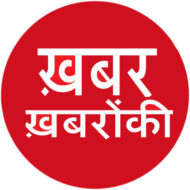
World Bank Applauds India’s Digital Public Infrastructure in G20 Document
Ira Singh
8 Sep’23
In a recent G20 document,the World Bank has showered praise on India’s pioneering efforts in establishing a robust Digital Public Infrastructure (DPI).This acknowledgment highlights India’s growing influence on the global stage in the field of digital governance and public service delivery.
According to the World Bank, India has reached incredible milestones in just six years, which would normally take nearly five decades to achieve.
The World Bank underlined in its G20 Global Partnership for Financial Inclusion (GPFI) document how India has built a robust digital public goods infrastructure through initiatives such as Unified Payments Interface), Jan Dhan, Aadhar, ONDC, and CoWin.
The GPFI document, prepared in anticipation of the G20 Summit hosted by India, noted the significant steps taken by the Narendra Modi-led government and the pivotal role of government policies and regulations in shaping the DPI landscape.
The World Bank underscores the significance of the “JAM Trinity” (Jan Dhan, Aadhar, Mobile), which combines universal bank account access, Aadhaar identification, and mobile connectivity. “India’s financial inclusion strategy relies on the JAM trinity of Jan-Dhan, Aadhaar, and mobile and integrates digital ID for more efficient account-opening and payment applications for access to financial services,” the document read.
“While DPIs’ role in this leapfrogging is undoubtable, other ecosystem variables and policies that build on the availability of DPIs were critical. These included interventions to create a more enabling legal and regulatory framework, national policies to expand account ownership, and leveraging Aadhaar for identity verification,” the World Bank document stated.
The World Bank document lauds India’s DPI approach, noting that India has accomplished in six years what would have taken five decades. JAM Trinity has increased financial inclusion from 25% in 2008 to over 80% of adults in the previous six years, a process that has been shortened by up to 47 years because of DPIs.
From its inception, the number of Pradhan Mantri Jan Dhan Yojana accounts opened has nearly tripled, rising from 147.2 million in March 2015 to 462 million by June 2022; women own 56% of these accounts, totalling over 260 million.
The Jan Dhan Plus programme encourages low-income women to save, resulting in over 12 million women customers (as of April 2023) and a 50% increase in average balances in just five months, as against the entire portfolio in the same time period. It is estimated that by engaging 100 million low-income women in savings activities, public sector banks in India can attract approximately Rs 25,000 crore ($3.1 billion) in deposits.
The G20 document, which was presented during a virtual summit of the world’s leading economies, commends India for its exceptional strides in digitizing public services and improving access to government resources for its citizens. India’s DPI model,which encompasses a wide array of digital platforms and services, has been touted as a benchmark for other nations to follow.The World Bank’s recognition of India’s DPI is seen as a testament to the country’s dedication to leveraging technology for public welfare. This infrastructure has proven especially critical during the ongoing global pandemic, facilitating the efficient delivery of healthcare services, education, and financial assistance to millions of people across the nation.
